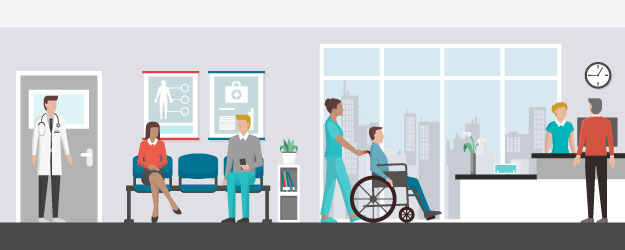Maximizing Health Operations Management Efficiencies

Optimal efficiency may sound more like a technical term than an approach to healthcare, but cutting-edge healthcare operations management resources can help you get there. With an examination into clinic practices and professional guidance toward the ideal opportunities for you, healthcare operations management can be the ticket your clinic needs to succeed.
Running a healthcare facility is a big job, especially for clinics with hundreds of patients and a huge support staff. Even with a trend toward more modern innovations—for example, paperless practices—healthcare operations management is still an uphill battle for clinics unsure about what it takes to improve efficiencies.
Despite the tendency to stick with current practices regardless of the potential for progress, a different approach to healthcare management can save money and improve patient outcomes—which is especially important for clinics that participate in new reimbursement models such as value-based care.
What is Healthcare Operations Management?
In essence, healthcare operations management refers to the practice of converting labor into output in the most efficient way possible within the confines of a business. This means breaking away from traditional business norms in order to see improved results with less effort, reduced headcount, and a decreased time commitment.
Sound a little convoluted? Let’s break it down further.
In a standard medical clinic, a nurse, receptionist, or administrative team is on hand to perform a host of functions, including:
• Schedule appointments
• Answer patient questions
• Retrieve records
• Check patients in
In busier clinics, this kind of endeavor can take a bustling collective of multiple people, shuffling through paper files, entering appointments manually into a calendar, and transposing patient answers from intake forms. If this doesn’t sound strange to you, it probably isn’t; thousands of clinics around the country still operate this way. However, the reliance on manual activity is far from the most efficient option, leaving plenty of places for your clinic to improve.
Increasing efficiencies in this circumstance means looking for pain points, identifying solutions, and implementing a new way to get things done. For example, there’s no need to manage a calendar by hand or take appointments over the phone when an online scheduling program can handle this for you.
Additionally, going paperless can save time and space in filing, allowing your patients to access medical records electronically through a secure portal rather than at your front desk.
There’s no need to use paper intake forms either; a tablet with electronic forms can save administrative staff members time while ensuring all information is uploaded accurately into a central CRM platform.
And while someone does indeed need to greet patients and answer the phone, one person can handle the task of managing the lobby—not an entire team.
How PaaS Patient Management Tools Can Help
For many clinics, especially those set in their ways, even small steps in the right direction can seem overwhelming. However, this doesn’t have to be the case. With help from platform-as-a-service (PaaS) patient management tools, it’s possible to easily identify weaknesses and quickly implement solutions designed to facilitate productive operations.
Patient management tools go beyond convenience. From medical insurance processing to patient lead tracking, you can find ways to improve performance without sacrificing the bottom line. This, in turn, reduces the time spent by your team, creating a more efficient atmosphere in the office.
John Richmond is Sequence Health’s CEO.
Sequence Health is a recognized leader for innovative healthcare management solutions. To learn more about software solutions that will save time and money, and further your quest to become a more efficient facility, please contact us.





